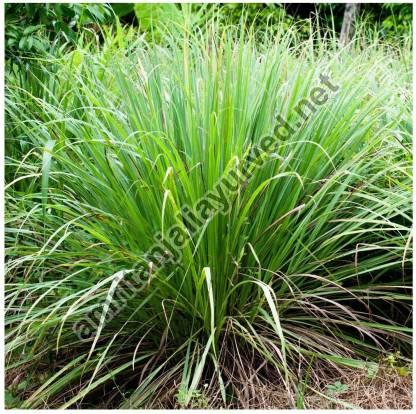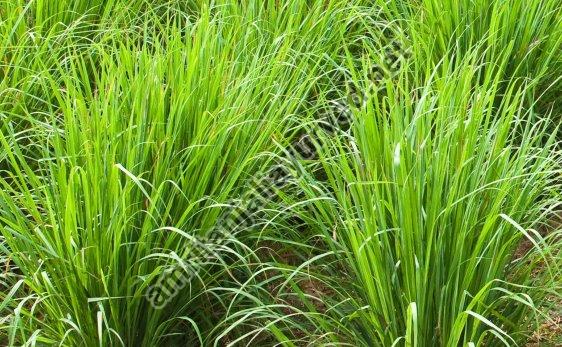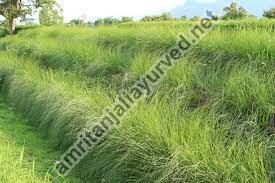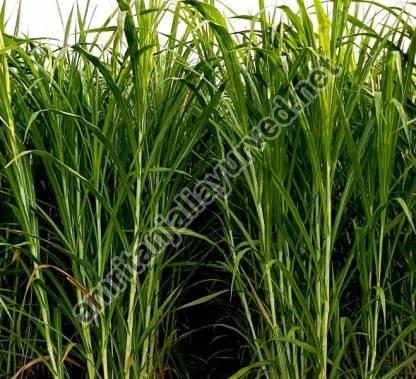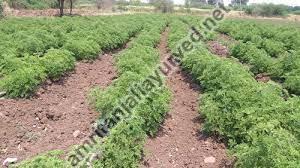Saheli Nagar, Udaipur, Rajasthan
- GST NO. : 08AAOCA7653C1ZJ
Aromatic Plants
Leading Manufacturers, Exporters, Wholesaler, Retailer and Trader of Lemon Grass Plant, Palmarosa Grass, Vetiver Slips, Napier Grass and Geranium Slip from Udaipur.
| Business Type | Manufacturer, Exporter, Supplier, Retailer, Wholesaler |
| Type | Fresh |
| Scientific Name | Cymbopogon |
| Usage | Plantation |
| Cultivation Type | Organic |
| Soil Specific | Alkaline |
Preferred Buyer From
| Location | Worldwide |
Lemon grass also called Cochin Grass or Malabar Grass is native to India and tropical Asia. It is grown and found in different parts of India and is used in perfumes business and also for medicinal purposes. Lemon is also used as a pesticide and preservative. Research shows that lemon grass has anti-fungal properties. Because of Lemon Grass wide spread use in different industries, Indian farmers have started cultivating it in huge amount. In the coming years, you can surmise that farmers involved in Pharmaceutical and Perfumes industry, Lemon Grass plantation will be preferred because of its widespread demand.
| Business Type | Manufacturer, Exporter, Supplier, Retailer, Wholesaler |
| Pile Thickness: | 30 mm |
| Color: | Green |
| Shape: | Curly |
| Feature: | Well Watered |
| Type: | Natural |
Preferred Buyer From
| Location | Worldwide |
The range we offer to the customers are stringently packed and delivered as per the customers' requirement and convenience. Quality control is a huge part of our company and we make sure, all our products are quality assured and trustworthy.
More About Palmarosa Grass :
- Palmarosa also known as Indian Rosha or Motia or Tikhadi, This perennial grass is native to southeast Asia, especially India , and it is cultivated for its oil. The essential oil of this plant, which contains the active compound geraniol, is valued for its scent and for a number of traditional medicinal and household uses. Because it has the fragrance of Rose, it is called rosha grass.
- Fortunately, Indian Palmarosa has been appreciated by the global/ international market and therefore, it demand has considerable increased. Because of this, a lot of Indian farmers have taken great interest in its cultivation.
- Palmarosa “Gramineae” is Multilateral and it botanical name is Cymbopogan Martinii. Two of its species is very popular – Motia and Sophia. Though both of them look alike, but Motia is more widespread a plant whereas, Sophia is more close kint. There is also difference in the colour and fragrance of the leaves. Therefore, the oil extracted from them is different and has different purposes. Motia species has about 855-92% Geraniol and Sophia about 60-70%. Hence, Motia species is considered more supreme.
- The oil extracted from Motia species is called Palmarosa Oil/ Rosha Oil/ East Indian Geanium Oil/ Elichpur rosha Oil. The oil extracted from Sophia Species is called Gingergrass Oil. Palma
Chemical Composition of Palmarosa Oil : The main Chemical component of Motia species of Palmarosa is Geraniol (75-85%), Geanyll Acetate (6-12%), Citrilol (5-6%), Linalool (2-4%), and Citral. Apart from these components, Palmarosa also has other minute elements like Alpha Pinene, Beta Pinene, Gamma Pinene & Alemin.
Important Uses of Palmarosa :
- Palmarosa Oil is used in great quantity by Pharmaceutical industry. Oil of Palmarosa is used in perfumery, particularly for flavoring tobacco and for blending of soaps due
- to the lasting rose-note it imparts to the blend. It also serves as a source for very high grade geraniol.
- Geraniol is highly valued as a perfume and as a starting material for large chemicals, viz., geranyl
- esters that have a permanent rose-like odour.
- Apart from being used by Cosmetic(Beauty Products) And Perfumes Manufactures, Palmarosa oil is also used in the manufacturing of various medicines. The oil is rich in the active compound geraniol, which makes it suitable for many medicinal and household purposes.
- Palmarosa oil is antifungal, anti-viral, bactericide, cytophylactic and antiseptic. Its application on skin moisturizes the skin, besides balancing the hydration levels and stimulating cell regeneration. Palmarosa oil also helps in clearing up minor infections and prevents ugly scarring in healing wounds.
- Palmarosa oil calms the mind, yet has an uplifting effect, while clearing muddled thinking. It is used to counter physical and nervous exhaustion, stress-related problems and nervousness.
- Palmarosa oil could be used with good effect on the skin, for nervous and stress-related problems and for the digestive system.
- Therefore, because of it’s utilities and uses in perfumery and pharmaceutical industry, it is in demand not just in the Domestic market about also internationally. Hence, Palmarosa Cultivation is highly beneficial for the Indian farmers.
Palmarosa Oil Marketing Strategy :
- Palmarosa Oil has wide uses because of which it marketing is fairly easy. There are quite a few Merchant based in delhi & Mumbai was purchase Palmarosa in wholesale and there are also quite a producers also for Palmarosa. Therefore, in the coming decade, there are great possibilities of increasing the sale of Palmarosa.
- It has been proved that Palmarosa is useful from different aspects. Cultivation of Palmarosa can be done in a variety of soils in fact in infertile land also. Even if the Land has low water content and is less watered, Palmarosa can be cultivated. The plant of Palmarosa doesn’t get affected by diseases, the maintenance is low and because of its popularity domesticallyand internationals, marketing Palmarosa is also easy. Hence, its cultivation is extremely beneficial for farmers.
Different Species of Palmarosa : I.W – 31245 and C.I. 80-68 produced by Indore Centre i.e. Motia and Sophia are the two varieties of Palmarosa. Trusha Vruta and P.R.C – 1 Motia is also popular about farmers.
Agriculture Techniques
- Preparing the soil/ Tillage : Plough the field at least twice for aeration. Use about 8-10 tons of manure and 8kgs per 10% B.H.C per acre. Trowel and level the field so that there is no water logging
- Manure/ Pesticides/ Fertilizers : For better yield in non irrigated condition use 12 kgs of Nitrogen, Phosphate (P2O5) and Potash per plant or between the trowel. The remaining part i.e. 6kgs should be given after a span of 30-40days.
- Seeding / Irrigation Process : Palmarosa can be grown in both well irrigated and non-irrigated conditions. In case of, not well irrigated conditions the yield depends on yearly rains but for well irrigated conditions, where the weather conditions are warm, then irrigate the land in intervals of 12-15 days or once in 3weeks for best yield. Flood irrigation is the best and modern way if irrigation for Palmarosa.
- Weeding Process : Weeding process should be carried 2-3 times to get rid of unwanted plants.
- Harvesting & Cleaning Process : For best yield of Oil from Palmarosa plant, start harvesting or cutting the plant immediately after flowering. Cut the plant 10-15cms from the ground level. Collect and mould the plant and store them in a cold place. Then through distillation process extract the oil from the plant.
- Availability of pamarosa Oil : Maximum oil is extracted from the Flowers and leaves of the plant and very less quantity of oil is extracted from the stem. The yield in the first year, 0.5-0.6% oil is extracted from the each plant .i.e. about 12-16kgs oil per plant in non-irrigated and 20-30kgs per plant in irrigated land. The yield in subsequent years goes up to, 20-30kgs per acre in non irrigated area and 40-45kgs per acre in irrigated conditions.
Palmarosa Meterial available :
- Palmarosa Slip
- Palmarosa Seeds
- Palmarosa Oils
With a proper network of buyers with us, we are able to provide returns of the farmers/cultivators who purchase the planting material from us and do farming as per our instructions. The crop/crops under buy back agreement are provided with targeted requirements. We are making farming a business which gives assured profits.
Persons interested in farming with buy back agreement will be entertained only on prior appointment basis. +91-9799931200
| Business Type | Manufacturer, Exporter, Supplier, Retailer, Wholesaler |
| Other Name | Vetiver Grass(eng), Khus Khus (urdu/hindi), Secate Violetta (spanish), Xieng Geng Sao (chinese). |
| Family | Gramminae: Chrysopogon Zizanioides, C.nigratana, C. Nemoralis |
| Origin | Asia , Southern Africa, South East Asia |
| Economic Part | Roots |
| Major Constituents | Vetiverone, Vetiverols, Vetivernate |
| Uses | Perfumery, Cosmetics |
Preferred Buyer From
| Location | Worldwide |
A dense, clumping perennial grass, to 1.5 m in height, native in India and Ceylon. 'Monto' is a sterile (non-seed producing) variety specially selected not to become weedy. In its natural environment, vetiver grows on riverbanks up to an altitude of 600m. It requires a hot and humid climate. It is adaptable to a wide range of soil and climatic conditions. It can be established on very acid, sodic, alkaline or saline soils. Vetiver tolerates very high levels of aluminum, manganese and a range of heavy metals in the soil. Due to its extensive and deep root system, vetiver is very tolerant of drought. It can stand extreme heat (50°C) and frost (-10°C) and can be established in areas with an annual rainfall from 450 mm and higher. Vetiver is sensitive to shade and this will slow growth, especially in young plants.
VETIVER CULTIVATION
Economic part - Roots
Major constituents - Vetiverone, Vetiverols, Vetivernate
Uses - Perfumery, cosmetics
Varieties
There, are basically two main types, viz. (1) Seedling type and (2) Non seedling type
The one that grows wild in North India is mainly the seedling type while that of the South is the non-seedling type. Hybrid 8, sugandha, ODV-3 are the superior strains for cultivation
Climate and Soil
Well drained, sandy loam and red laterite soils of pH 6-8 are considered ideal as the roots produced in such soils are thick and contain more essential oil.
The crop grows luxuriantly with a rainfall of 100-200 cm and a temperature of 30-40oc.
Planting
There are three different systems of planting adopted by different growers.
1) System 1: Conical ridges, 30-38 cm high and 48 cm apart are made at the summit and the slips planted 23 cm apart on the summit.
2) System 2: The land is laid out into beds of 30 cm high, 68 cm wide and 45 cms apart edge to edge and the slips are planted on these in two rows 22.5 cm apart, leaving 22.5 cm on either sides.
3) System 3: The beds are made 45 cm high, 60 cm wide and 30 cm apart edge to edge and two rows, 30 cm apart, are planted on these leaving 15 cm on either side. The spacing within the row is also 30 cm in this system.
Propagation
Vetiver can be propagated through slips. The top of the slips are cut down before planting to prune transpiration loss, thus giving a better chance for survival of the slips.
The slips are planted in pits, five to eight cm deep made with a pointed stick. One hectare requires 1,50,000 to 2,25,000 slips with 2 - 3 slips per pit in the commonly adopted system of planting (IInd method).
The best planting time to get higher oil yield under South Indian condition is June-July.
Crop stand
Manures and Fertilizers:
Application of FYM at 10 ton/ha and 60 kg of N, 22.5 kg in each of P2O5 and K2O was found to be efficient in increasing the yield of vetiver.
Intercropping
During the initial crop growth (70-90 days) crops like cowpea, black gram, green gram, cluster bean, pigeon pea, senna and sacred basil can be grown.
Plant protection
No serious insect pests attack this crop. In dry areas termites and white ants attack the roots.
Leaf blight caused by Curvularia trifolii and Fusarium diseases is controlled by repeated spraying and drenching with copper oxychloride or 15 Bordeaux mixture.
Scale insects are kept under check by application of metasystox (0.4%) or chlorpyriphos at 2.5 l/ha.
Harvesting
The plants planted in July should be harvested after 18 months to get the maximum oil yield. Harvesting is usually done during dry season (December to February) by manually digging out the bush along with its roots. The roots are then separated from the leaves, washed and dried under the shade for 1-2 days before distillation.
The roots that possess the following characteristics have good oil content. It should
1. Be slightly reddish brown
2. expose a hard surface when the skin is peeled off
3. be thick, hard, long and wiry and
4. give a very bitter taste when chewed.
Yield
On an average one hectare of vetiver plantation yields 3-4 tones of roots which on distillation yield 15 to 16 kg of oil. Roots yield 1.00 to 1.50 per cent of oil on dry weight basis.
We provide Agro technology and Agribusiness consultancy through better utilization of your resources, value of your money, independent consultancy, cost effective, profitable solutions and complete satisfaction without any deviation.
Material Available
- plant
- oil
With a proper network of buyers with us, we are able to provide returns of the farmers/cultivators who purchase the planting material from us and do farming as per our instructions. The crop/crops under buy back agreement are provided with targeted requirements. We are making farming a business which gives assured profits.
Persons interested in farming with buy back agreement will be entertained only on prior appointment basis.+91-9799931200
| Business Type | Manufacturer, Exporter, Supplier, Retailer, Wholesaler |
| Scientific Name | Pennisetum Purpureum |
| Type | Aromatic |
| Color | Green |
| Usage | Gardening |
| Origin | India |
Preferred Buyer From
| Location | Worldwide |
| Business Type | Manufacturer, Exporter, Supplier, Retailer, Wholesaler |
| Family Name | Geraniaceae |
| Odour | Rosy,Mint,Fresh |
| Usage | Help in the Treatment of Acne,Eczema,Hemorrhoids,Burns,Dermatitis,Cuts,Lice,As Mosquito Repe |
| Purity | 100% |
| Color | Pale Green to Yellow Green |
| Origin | East Asia |
Preferred Buyer From
| Location | Worldwide |
GERANIUM CULTIVATION
Geranium (Pelargonium graveolens (L) Hervitt.)
Geraniaceae
Varieties
Algerian, Reunion, IIHR-8, Kodaikanal 1 and Egyptian are the popular varieties under cultivation.
Soil and climate
A deep light porous well drained soil rich in organic matter and acidic in reaction with a pH 5.5 to 6.0 is suitable. An elevation ranging from 1000 - 2400 m with an annual rainfall of 100 to 150 cm evenly distributed throughout the year is ideal.
Propagation
Geranium is propagated by stem cuttings. Cuttings of about 10 – 15 cm are taken from current season growth with a well formed crown of leaves with 3 - 4 nodes and terminal bud. Dipping basal portion of the cuttings in 200 ppm of IBA increase the rooting efficiency. Cuttings planted in raised nursery beds will be ready for planting with in 60 days.
Planting
Thorough field preparation leading to fine tilth condition is essential. Rooted cuttings of 2 months age are planted at a spacing of 45 x 45 cm during April - May.
Manuring
FYM 25 t/ha and NPK 25:150:100 kg/ha are applied as basal. Remaining 125 kg N/ha in 5 equal splits is applied at every 2 months interval. During June-July of every year, ZnSo4 20 kg/ha and Boron 10 kg/ha are applied.
Irrigation
Geranium is usually grown as a rainfed crop. Irrigation during dry periods increases the yield.
After cultivation
Weedings, uprooting and burning the diseased plants throughout the life cycle of the plant. From the second year onwards give a deep soil forking around the plants to improve the growth of more suckers.
Pruning
Pruning of the bushes is necessary when the bush shows signs of decline. The branches are cut back leaving 15 - 20 cm once in 4 - 5 years.
Plant protection
Pests
Nematode
To control the nematodes (Meloidogyne hapla) in nursery, apply Carbofuran at 2 kg a.i./ha once in 6 months in June and December.
- Diseases
- Wilt
- Drench with Carbendazim 1 g/lit at monthly intervals.
Harvest and distillation
In the year of planting only one harvest can be done at 7 - 8 months and thereafter 3 or 4 harvests can be done in a year. The tender tip portion with 6 - 12 nodes constitutes the materials for harvest. The harvested material is withered in shade for two to three hours and distilled.
Yield
Herbage: 20 - 25 t/ha
Oil yield: 15 - 20 kg/ha
We provide Agro technology and Agribusiness consultancy through better utilization of your resources, value of your money, independent consultancy, cost effective, profitable solutions and complete satisfaction without any deviation.
Material Available
- plant
- oil
With a proper network of buyers with us, we are able to provide returns of the farmers/cultivators who purchase the planting material from us and do farming as per our instructions. The crop/crops under buy back agreement are provided with targeted requirements. We are making farming a business which gives assured profits.
Persons interested in farming with buy back agreement will be entertained only on prior appointment basis.+91-9799931200


